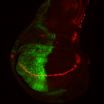(Press-News.org) U.S. Department of Agriculture (USDA) scientists are helping deployed American troops protect themselves against sand flies, which are major pests in Afghanistan, Africa and the Middle East.
Sand flies are vectors of Leishmania parasites that cause leishmaniasis, a devastating disease for which there is no vaccine or medication. People who are bitten by infected sand flies do not know whether they have the disease until it becomes apparent three or four months later. Symptoms include permanent skin disfigurement and sometimes severe organ damage.
At the Agricultural Research Service (ARS) Knipling-Bushland U.S. Livestock Insects Research Laboratory in Kerrville, Texas, entomologists Andrew Li and Adalberto Pérez de León, along with their colleagues, are studying different methods to kill sand flies. Part of the research is funded by a USDA initiative called the Deployed War-Fighter Protection Research Program, designed to find methods to help protect military personnel against disease-causing insects.
The researchers are screening insecticides to find out which ones are more effective and useful to military personnel and other people affected by this pest. Li is also studying sand fly resistance to pesticides, and is developing a test for detecting the mutations responsible for resistance.
To evaluate new insecticides and repellents, researchers started a sand fly colony, which will also enable them to develop formulations and design diagnostic tools that can rapidly detect sand fly resistance to chemicals. This research is especially crucial for deployed military personnel. It was reported that in one incident, troops in Iraq were being bitten between 100 and 1,000 times per night by sand flies.
Finding solutions to control sand flies is also a priority of scientists at the ARS European Biological Control Laboratory in Thessaloniki, Greece, where they're taking a close look at sand fly populations that transmit leishmaniasis in their country. Results from this research could also help scientists initiate better strategies and develop new and improved tools to control sand flies.
###ARS is USDA's principal intramural scientific research agency.
Read more about this research in the November/December 2012 issue of Agricultural Research magazine.
http://www.ars.usda.gov/is/AR/archive/nov12/insects1112.htm
USDA is an equal opportunity provider and employer. To file a complaint of discrimination, write: USDA, Office of the Assistant Secretary for Civil Rights, Office of Adjudication, 1400 Independence Ave., SW, Washington, DC 20250-9410 or call (866) 632-9992 (Toll-free Customer Service), (800) 877-8339 (Local or Federal relay), (866) 377-8642 (Relay voice users).
Protecting US troops against sand flies
2012-11-19
ELSE PRESS RELEASES FROM THIS DATE:
A 3-D light switch for the brain
2012-11-19
A new tool for neuroscientists delivers a thousand pinpricks of light to a chunk of gray matter smaller than a sugar cube. The new fiber-optic device, created by biologists and engineers at the Massachusetts Institute of Technology (MIT) in Cambridge, is the first tool that can deliver precise points of light to a 3-D section of living brain tissue. The work is a step forward for a relatively new but promising technique that uses gene therapy to turn individual brain cells on and off with light.
Scientists can use the new 3-D "light switch" to better understand how the ...
Less than half of youth with mental illness received adequate follow-up care, new study finds
2012-11-19
For Immediate Release – November 19, 2012 (Toronto) Youth with mental illness are among the most vulnerable, but new research from the Centre for Addiction and Mental Health (CAMH) has found that less than half of Ontario youth aged 15 to 19 hospitalized with a psychiatric diagnosis received follow-up care with a primary care doctor or psychiatrist within a month after being discharged.
"Timely aftercare is crucial in maintaining the health of youth with mental illness, and avoids future hospitalization, which is the most intensive, intrusive and expensive psychiatric ...
The fragility of the welfare state
2012-11-19
VIDEO:
A video explaining the fragility of the welfare state.
Click here for more information.
The social contract that supports the welfare state, where income is redistributed, is fragile. That is one of the main conclusions of an experimental study done at Universidad Carlos III of Madrid (UC3M), which analyzes how the redistribution of income to people through government action originates.
The study, carried out by Professor Antonio Cabrales, of UC3M, in collaboration with ...
A myth debunked: The full moon does not increase the incidence of psychological problems
2012-11-19
This release is available in French.
Quebec City, November 19, 2012—Contrary to popular belief, there is no connection between lunar phases and the incidence of psychological problems. This is the conclusion reached by a team of researchers directed by Professor Geneviève Belleville of Université Laval's School of Psychology after having examined the relationship between the moon's phases and the number of patients who show up at hospital emergency rooms experiencing psychological problems. Details on the study can be found on the website of the scientific journal General ...
The benefits of gratitude, how weight stigma affects health, and more
2012-11-19
Science on the benefits of gratitude and new in our journals...
For Thanksgiving and Holidays: Benefits of gratitude
A growing body of research highlights the importance of gratitude for both social and personal well-being. Ahead of Thanksgiving and the holidays, talk to an expert on gratitude research:
Sara Algoe of the University of North Carolina-Chapel Hill who has investigated how gratitude benefits close relationships, including how expressing gratitude leads to long-term social outcomes for women with metastatic breast cancer and the evolutionary role for ...
Genetic factor holds key to blood vessel health
2012-11-19
Researchers at Case Western Reserve University School of Medicine have identified a genetic factor that prevents blockages from forming in blood vessels, a discovery that could lead to new therapies for cardiovascular diseases.
The findings are described in the Nov. 19 issue of the Journal of Clinical Investigation.
Researchers led by Mukesh K. Jain, MD, FAHA, professor of medicine, Ellery Sedgwick Jr. Chair and director of Case Cardiovascular Research Institute at Case Western Reserve School of Medicine, found that a shortage of the genetic factor KLF4, which regulates ...
Sequester will have a devastating impact on America's research enterprise
2012-11-19
WASHINGTON, D.C. – Three organizations representing America's research universities today launched a website that aims to inform policymakers and the public of the impact that the upcoming budget sequester would have on federal funding for university research. The organizations – the Association of American Universities (AAU), the Association of Public and Land-grant Universities (APLU) and The Science Coalition (TSC) – urge Congressional leaders and the President to act quickly to develop a comprehensive, balanced solution to America's fiscal crisis that avoids steep cuts ...
Alcohol provides protective effect, reduces mortality substantial
2012-11-19
Injured patients were less likely to die in the hospital if they had alcohol in their blood, according to a study from the University of Illinois at Chicago School of Public Health -- and the more alcohol, the more likely they were to survive.
"This study is not encouraging people to drink," cautions UIC injury epidemiologist Lee Friedman, author of the study, which will be published in the December issue of the journal Alcohol and is now online.
That's because alcohol intoxication -- even minor inebriation -- is associated with an increased risk of being injured, he ...
Fruit fly studies guide investigators to misregulated mechanism in human cancers
2012-11-19
KANSAS CITY, MO—Changes in how DNA interacts with histones—the proteins that package DNA—regulate many fundamental cell activities from stem cells maturing into a specific body cell type or blood cells becoming leukemic. These interactions are governed by a biochemical tug of war between repressors and activators, which chemically modify histones signaling them to clamp down tighter on DNA or move aside and allow a gene to be expressed.
In the November 19, 2012, online edition of the journal Genes & Development, researchers at the Stowers Institute for Medical Research ...
The Journal of Biological Chemistry commemorates an important 1987 discovery
2012-11-19
It has been 25 years since the identification of two proteins that facilitate communication between nerve cells – a significant achievement that revealed a group of related proteins. In recognition of this advancement, the Journal of Biological Chemistry has published a series of articles that assess what we know about each family member in this group and where that research is headed.
This superfamily was recognized in 1987 with the discoveries of the genes that encode two of its members, the GABAA and glycine receptors, and of the similarity of these proteins to the ...

